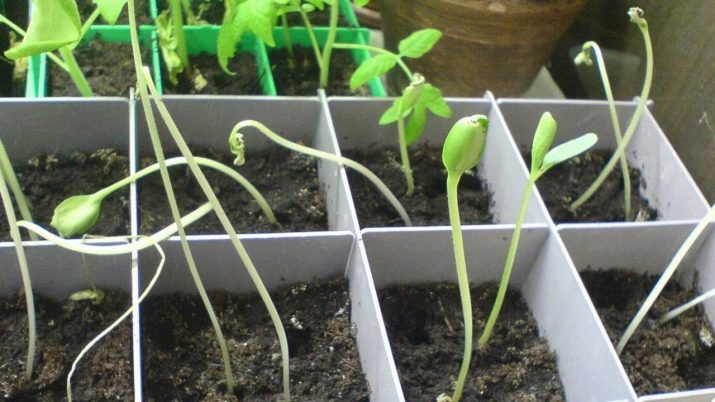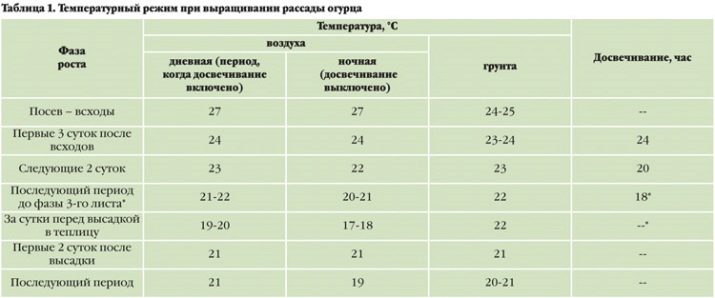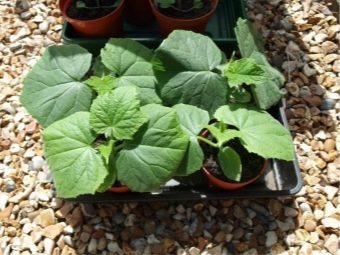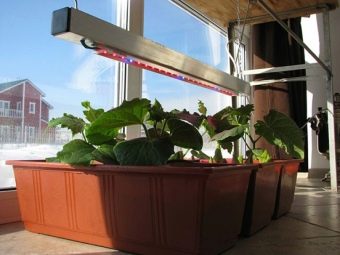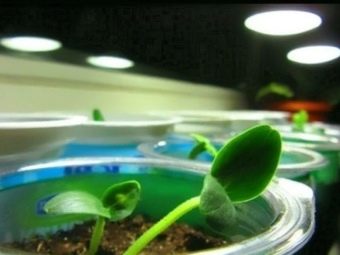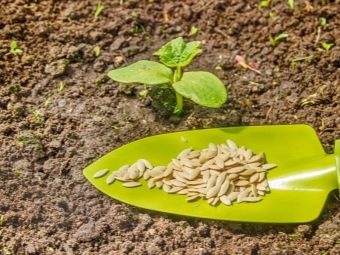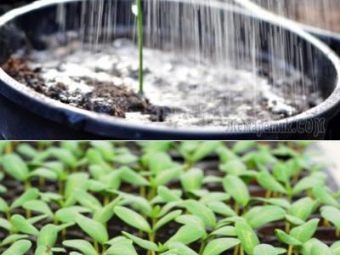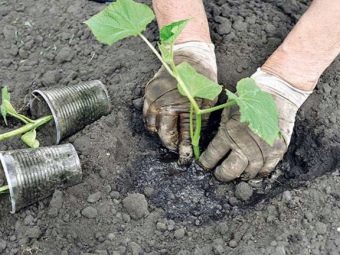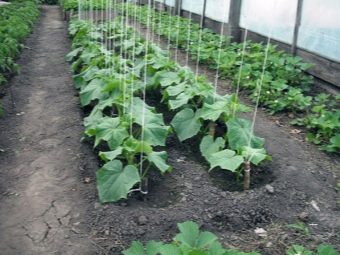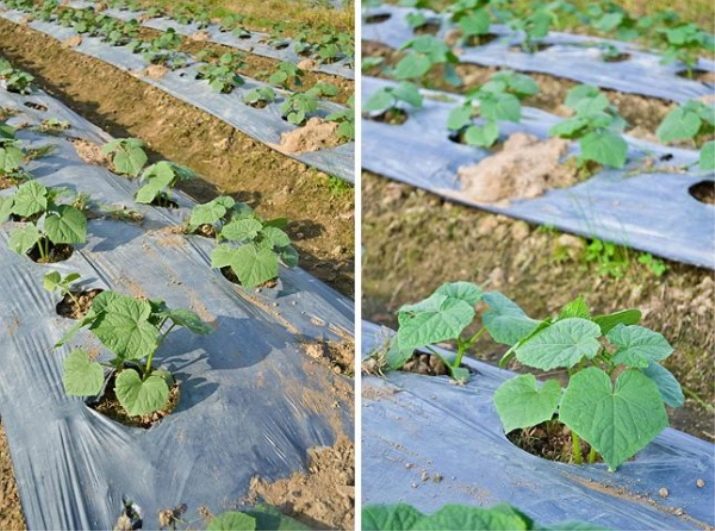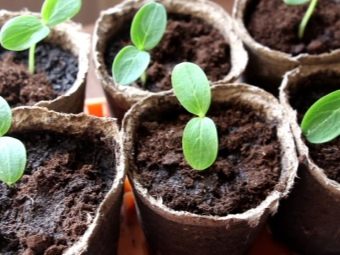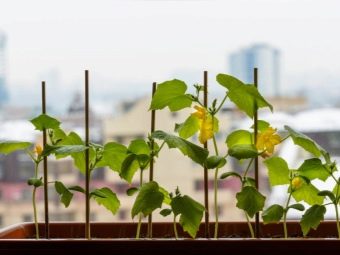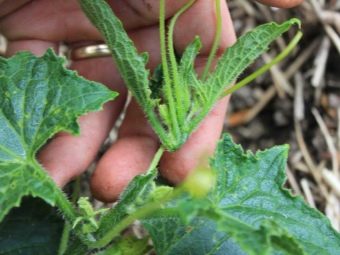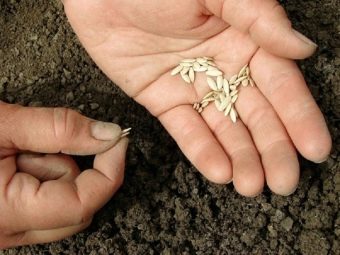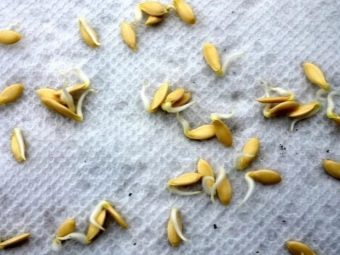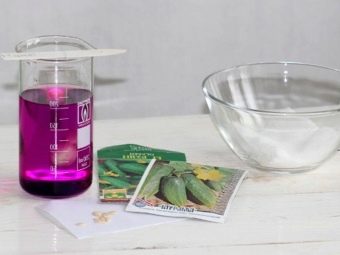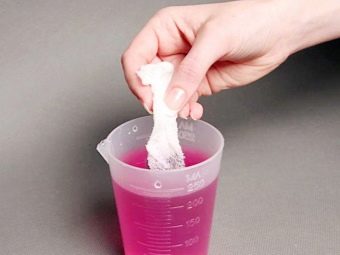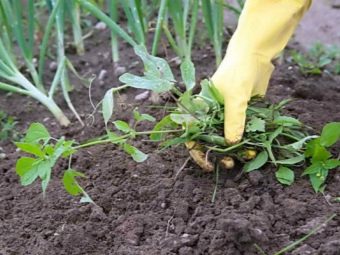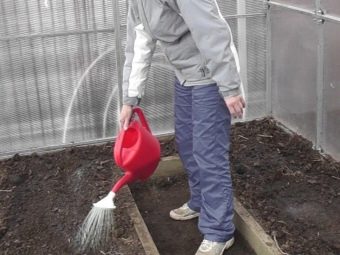What to do if cucumber seedlings stretch out?
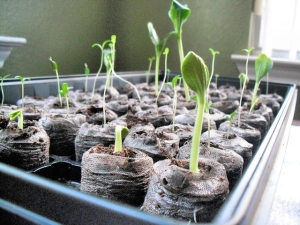
Cucumbers are monoecious plants. On one such plant, several flowers appear, some of which are later tied and give fruits directly, while others serve for pollination. Seeds for the next planting, as a rule, are taken from the largest fruits from the previous harvest. For a good, large, and most importantly, a tasty harvest, any gardener has to work hard. When planting cucumbers, almost everyone faces the same problem - pulling out cucumber seedlings at the stage of growing them in a cup or container.
The reasons
In general, cucumbers are quite unpretentious and easy to grow, even for those who are just starting out to garden lovers. But cucumber seedlings are often drawn up, becoming thin and long. It is believed that at the time of growth in plants inside the cell change placement, because of what the seedlings become weakened, prone to disease, loses its color. The main problem is that when the plant suddenly begins to become frail, it is impossible to immediately determine the cause of this phenomenon.
There are the following causes of this problem:
- lighting - cucumbers often do not have enough light, as they begin to be planted in winter, when daylight hours are extremely short, and leaves can get serious burns from ordinary lighting lamps;
- temperature - if the temperature is too low, instead of the rapid growth of the plant, you can get a rich development of the root system, so that the seedlings will be stunted and elongated;
- planting density - if the plants started to grow well and develop, then in the future they may not have enough space and nutrients to continue their growth, as the shoots will begin to interfere with each other;
- watering - cucumbers do not tolerate too frequent watering and large amounts of water, they can be easily “flooded”;
- nutrients - with the bait of young sprouts, you can also overdo it, they will begin to stretch; the same happens with underfeeding;
- there is not enough space in a glass, pot or container;
- bad land for landing.
How to fix the situation?
To correct the situation, it is necessary to build on the cause.
- The problem with the amount of light. In this case, the installation of special equipment requires the knowledge and assistance of specialists. It is necessary to resort to the use of fitolamp to prevent seedlings from overgrowing. True, it is worth considering that they are expensive. As a replacement, you can use modern "economical" light bulbs, setting a timer on them to avoid overheating of cucumbers and plant sprouts on the window at home.
- The problem with the temperature. The best temperature for growth is considered to be sixteen degrees Celsius above zero, you need to regularly monitor this and in time heat or air the room in which the plants are located.
- The problem of dense sowing. If you do not divide the seedlings, giving her more room to grow - the crop will die. Seedlings that are in the same total capacity, it is desirable to immediately try to plant so that the leaves during the growth did not touch each other, if they outgrown - you have to separate the plants from each other.
- The problem of frequent watering. Water cucumber seedlings is only when the leaves begin to fall slightly, but not more often, so as not to spoil the plants.
- The problem of the presence and absence of nutrients. Information about the bait of cucumbers is best to check the reference books or also contact the experts, as it is necessary to accurately observe the proportions of substances such as potassium, nitrogen and phosphorus.
- Tare and bad land. It is necessary either to transplant the seedlings, or to pre-select suitable containers, to bury the plants during planting and to prepare special nutrient mixtures for them.
Can I plant in the ground?
Planting cucumber seeds in the soil of the soil can and should be, but it must be properly selected. The soil is prepared for the physical and mechanical structures.The mixture of soil in which the seedlings sit and the land for its planting should be as close as possible to each other in content.
It is important that the ground was well breathable, and the landing was carried out in an open, but protected from the wind and sunlit area.
A few months before planting cucumbers should be liming using ash, peat or compost. When planting sprouts in the greenhouse, you need to constantly monitor the light and microclimate, control the temperature and ventilate (in fact, this is similar to growing seedlings on the windowsill).
Planting of already stretched seedlings in open ground
If the sprouts are already time to plant, but they remained painful and elongated, then you need to use certain technologies of planting with the use of burial. When the stems are very thin and weak, then they do not need to be deeply buried, it is better to try to land approximately the same way as they grew in the planting zone. Wooden poles are placed next to the planting pits. Soil, which sprinkled with stems and cotyledons, should be loose and warm.
When the bushes are already strong and have been adapted to the new place, they are vertically tied up. On the open ground with antennae cucumber seedlings can support each other.
Landing in the cold land
To avoid seedlings freezing, which had to be planted in the ground at low temperatures, the ground around the bushes is covered with a perforated dark color film, because it will be better to attract heat and sunlight, saving the earth from excess water. This will help to avoid rotting of plant parts, ensure the growth of roots and support elongated seedlings.
Preventive measures
In order for the seedlings to be strong, not stretch out and grow well in pots before planting, certain rules should be followed to help prevent excessive growth of the stems.
- Dripping. This method is good when the sprouts began to stretch. It is made as follows - a recess is made next to the stalk of the plant, where a part of the stem is put, after which it is carefully powdered with earth, compacted and moistened with a small amount of water. Then the upper part of the plant will reach for the light, and the roots will sprout below. You can also just pour the ground around the stem to bury, if the sprout stretched slightly.
- Stabilized temperature. At home, planting will suffer from hot batteries or drafts from windows. You need to look for a place where there will be enough light (or set artificial), but the plant will not be blown or subjected to overheating.
- Distance. Immediately when sowing seeds should be approximately determine the density of future seedlings and try to increase the distance between them.
- The amount of light. It is best to prepare the lighting before sowing seeds. In greenhouses you can use doshochivanie, which is used in the morning and evening. When creating lighting at home, it is also worth remembering that the light day for cucumber, which will always last, is eighteen hours.
- Moisturizing seedlings. Strong watering leads to abundant growth. If the planting is still long, the stems are stretched and thinned. It is necessary to prevent neither drying, nor excessive abundance of moisture, in which sprouts can get sick or rot, it is best to schedule watering and monitor the condition of the plants.
- Plant nutrition. Top dressing is necessary for receiving qualitative material of landings. You can choose complex fertilizers, soluble in water, in specialized stores. Good water solubility is important because then there will be confidence in the plant getting enough nutrients each time. You can also use organic fertilizers, such as bird droppings or humus, but then you have to make a special solution yourself, since in their pure form, these types of bait are not suitable.
- Topping. This method is best used with short cucumbers. It helps to get cucumbers larger and in larger quantities. It is necessary to remove almost all the shoots with bouquet arrangements, remaining to pinch over the leaves.
For planting in the greenhouse is best to choose a certain type of seed.
They are as follows:
- ordinary;
- granulated;
- pre-processed.
It is worth planting cucumbers at the end of March when it comes to greenhouses. If the sprouts will be at home, then it is better to start in the winter. In open ground, seedlings are planted not earlier than mid-April, as the danger of frost disappears.
To ensure protection against diseases of the fungus, it is recommended to hold the seeds for several minutes in antimicrobial solutions before planting.
To increase their growth, they are soaked in nutrient solutions for about a day. When small roots and sprouts appear, cucumbers are immediately planted in special containers.
Experienced farmers and gardeners before planting often get rid of "defective" seeds, then carry out disinfection with the help of potassium permanganate solution, germinate them through wet gauze cloth and temper. In order for seeds to germinate better, you should use those that are about two or three years old.
To select seeds that are really high quality, first choose the largest, then put them in a glass with salted water. Those who drowned will give strong and strong shoots. Floated - empty, they should be thrown away.
Very often, planting soil is used for planting, but it is not suitable for cucumbers because it contains too much peat, which dries quickly if you do not constantly control the level of humidity.
Preparation for further landings
After the first crop has been harvested, greenhouses for the next lots of seedlings need to be prepared to avoid the disease of future cucumber sprouts. When the harvest is gathered, plants that have already otplodonosili and are the source of many diseases for future seedlings are carried out of greenhouses and greenhouses, but they are first watered with fungicides for disinfection, and special checkers (Fas, Climate) are used for placement with on 20 m³.
It is necessary to carry out the treatment of what is already being discarded in order to completely eliminate the spread of diseases and harmful insects. The greenhouse itself must then be thoroughly cleaned of weeds, plant residues, and disinfected. Such simple measures will save time for the future planting season and secure young seedlings.
Specialized literature
You can use books and recommendations that will help get a rich harvest. For example, the book "From seedlings to harvest" by Anna Belyakova, which tells about the cultivation of cucumbers in the open field, and in greenhouses with greenhouses is popular. It provides recommendations for different varieties, the most effective fertilizing, rules for pollination of flowers and much more. In the book “Rich harvest” by Sergey Samsonov you can find tips on the proper cultivation of vegetables in greenhouse conditions. In Tatiana Ugarova's Family Vegetable Production there are recommendations on how best to grow cucumber stems on narrow beds and in the second half of summer, if the plants were planted too late. The book Gourds of Nikolai Zvonarev gives step-by-step instructions for working with the crop in the open field.
See the following video for tips on growing cucumbers.

